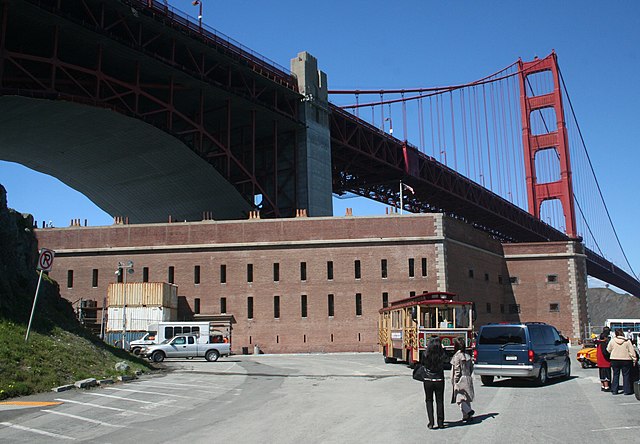Seacoast defense in the United States
Seacoast defense was a major concern for the United States from its independence until World War II. Before airplanes, many of America's enemies could only reach it from the sea, making coastal forts an economical alternative to standing armies or a large navy. After the 1940s, it was recognized that fixed fortifications were obsolete and ineffective against aircraft and missiles. However, in prior eras foreign fleets were a realistic threat, and substantial fortifications were built at key locations, especially protecting major harbors.
The outer works of Fort McHenry in Baltimore harbor, although built in the 1860s, are broadly similar to early First and Second System forts built prior to the War of 1812, with low earthworks, although mounting much larger cannon and reinforced with masonry. The cannon are 8-inch converted rifles (lined down from 10-inch Rodman guns) and a 15-inch Rodman gun, typical of the post-Civil War era.
The Statue of Liberty is built on top of Fort Wood of the Second System
50-pounder Model 1811 Columbiad (7.25 inch or 184 mm bore) and center-pivot mounting designed by George Bomford as an experimental coastal defense gun. This gun was built in 1811 as a component of the Second System. Photographed in Clear Lake, Wisconsin.
Fort Point - San Francisco - example of a mid-1800s Third System fort
Submarine mines in United States harbor defense
The modern era of defending American harbors with controlled mines or submarine mines began in the post-Civil War period, and was a major part of US harbor defenses from circa 1900 to 1947.
A controlled mine (at left), with the distribution box that connected it and the other mines in its group to the mine casemate on shore.
This WW2-era mine, with its anchor, is on display at Fort Warren in Boston Harbor.
The mine casemate at Fort Strong, Long Island, Boston Harbor, once the control point for mines in the southern channels to the harbor.
A mine casemate had a control panel like this for each 19-mine group under its command. The controls were used to test and to fire the mines.








